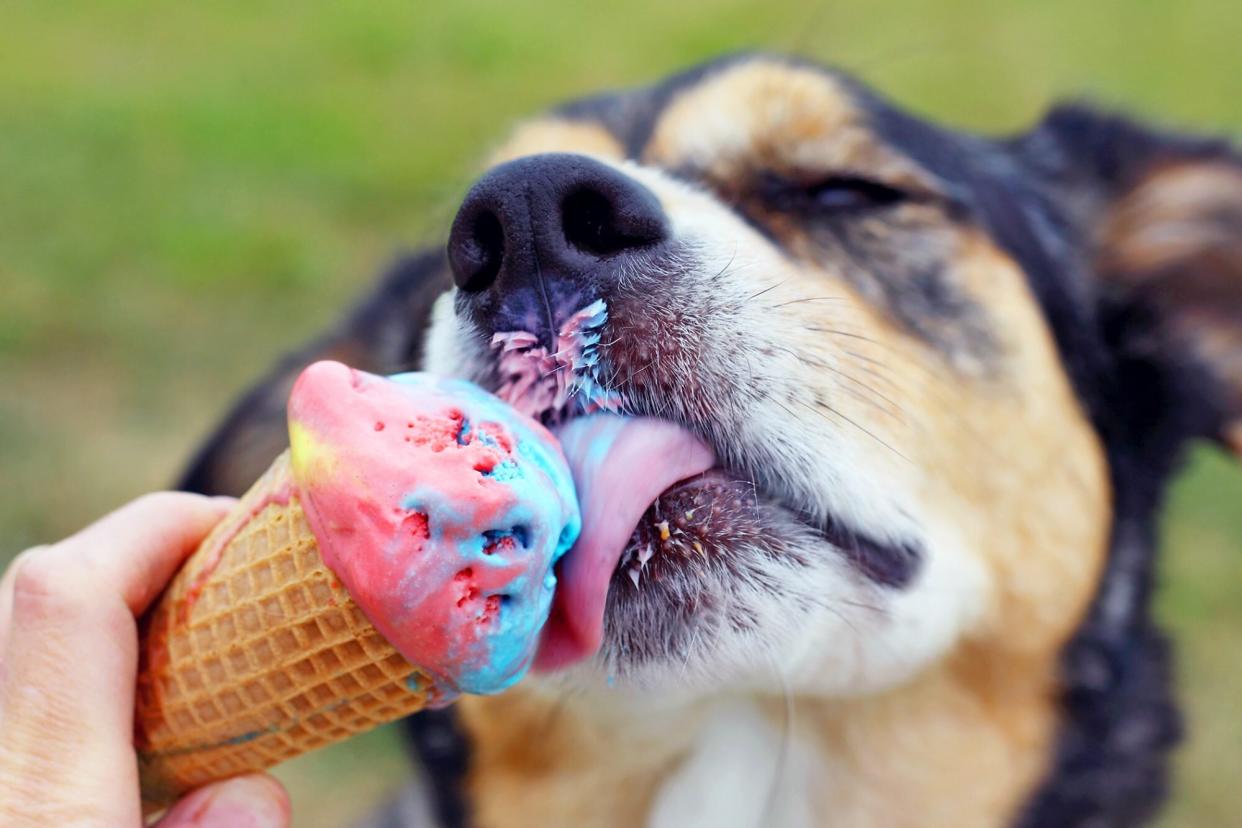Do Dogs Have Taste Buds?

ChristinLola / Getty
Perhaps nothing is more exciting to a dog than hearing the dinner bell, whether that's the can opener or the crumble of the kibble bag. Pups of all ages and sizes come running when it's dinnertime—some might even understand the words "eat" or "food" better than their own name.
As dogs' lives seemingly revolve around food, we're left wondering how much they can actually taste of it. Do dogs have taste buds that allow them to enjoy different flavors of food?
Do Dogs Have Taste Buds?
"Yes, dogs have taste buds that allow them to taste their food," says Brittany Berry, DVM, of Salt Creek Veterinary Hospital. Similar to humans, dogs have taste buds on the surface of their tongues in small bumps called papillae. "Dogs also have taste buds on the roof of their mouths and in the back of their throat," says Berry, which may explain why they're able to inhale food so quickly but still enjoy it.
Do Dogs Have the Same Taste Buds as Humans?
While dogs do have papillae on their tongues as humans do, their sense of taste is a little less refined. "Dogs have only about one-sixth the number of taste buds that people do, and their distinct sense of taste is actually quite poor," states the Merck Veterinary Manual. This might explain why your dog loves to swallow food but also garbage (or even poop) on occasion.
What Flavors Can Dogs Taste?
If you've seen any dog food commercial, you know that taste still matters to dogs despite having fewer taste receptors. Companies advertise canine meals that sound more geared towards humans: roasted chicken with rice, grilled steak, bacon, and cheese. And if you have a picky eater, you might even question how they can differentiate between flavors, food, and treats with so few taste buds compared to humans.
Studies have revealed that dogs have the ability to detect the same five basic tastes that humans can: sweet, sour, salty, bitter, and umami (savory). There's even evidence to suggest dogs taste fat better than we do.
Research also tells us that our puppies' ancestors ate a majority of meat in their diets, so dogs today have specific taste receptors that are fine-tuned to meats. They can also identify sweet flavors as a result of the fruits and vegetables their ancestors likely enjoyed.
How Does a Dog's Sense of Smell Impact How They Taste?
Of course, we also know that sense of smell plays a significant role in taste perception for humans and dogs. So, before you feel sad about your pup's unsophisticated palate, remember that a highly developed sense of smell likely enhances the tasting experience for your dog. "They possess up to 300 million olfactory receptors in their noses, compared to about six million in us," states the Phoenix Veterinary Center. "And the part of a dog's brain that is devoted to analyzing smells is about 40 times greater than ours."
The science behind the canine nose explains why dogs start to sniff the air and salivate when you're cooking something delicious, and why your pooch might be more interested in canned wet food than they are in dry kibble. The canned food emits a more pungent odor than the bagged food, which makes it more attractive to a doggy nose. This is also why a lot of dog trainers suggest smelly treats for training sessions; they taste even better to pups!
What Tastes Bad to Dogs?
If your dog seems like he'll eat anything under the sun, you may be wondering what tastes would (or could) even turn him away. This goes back to your dog's roots once more—bitter, sour flavors signaled spoilage or poison once upon a time, telling his ancestors not to eat something. This explains why dogs might try to avoid taking medication due to a "chemical" smell and bitter taste.
Although not as mature as humans, dogs do have taste buds that help them differentiate between certain foods. Their powerful sense of smell also lets them know which foods are the most appetizing—which might be why the smell of ground beef gets them more excited than their dry dog food.
Dogs may not have the most exquisite palates, but they likely have their own favorite treat thanks to their taste buds.

